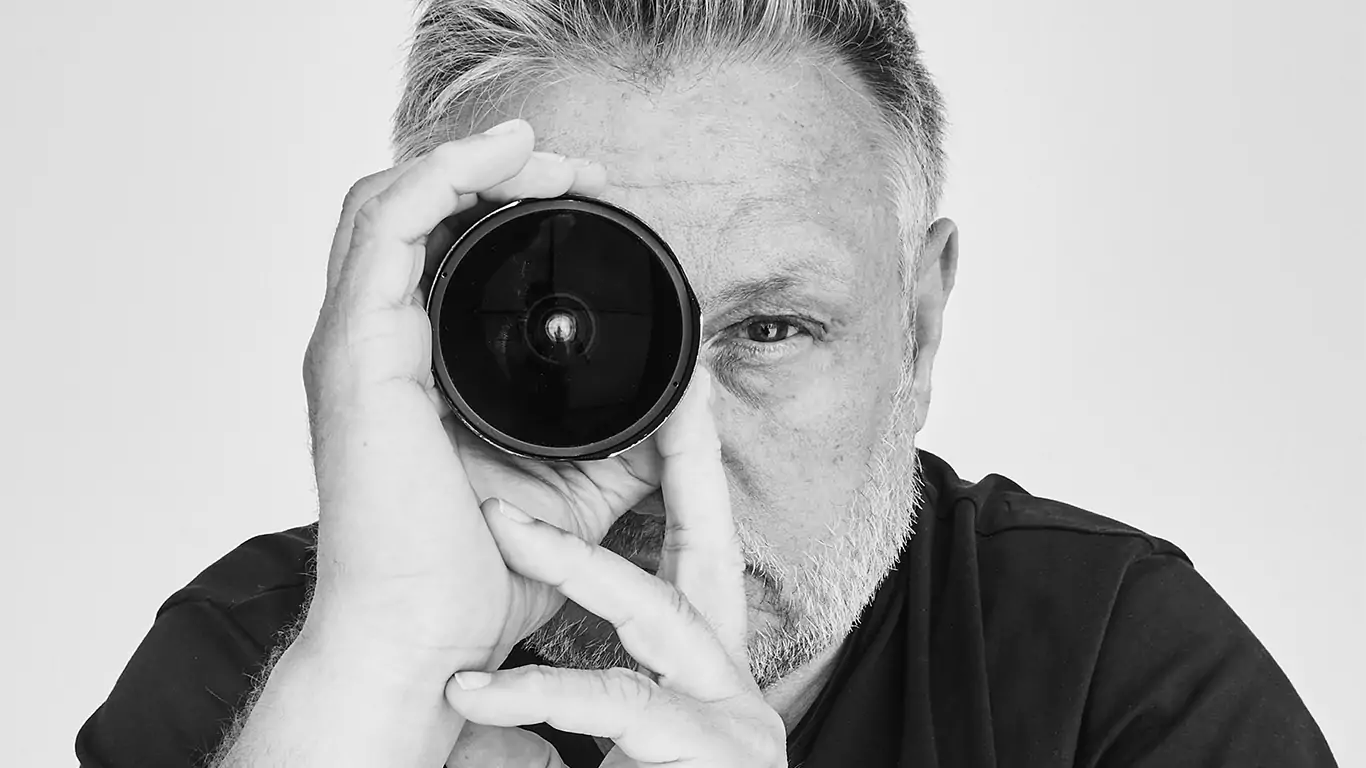Renowned for revolutionising visual culture, British photographer Rankin has harnessed the power of photography to challenge and redefine cultural norms since the 1990s. With an unflinching eye, Rankin takes iconic portraits beyond mere snapshots, preserving intimate, fleeting moments of personality, character, and emotion that set him apart from many of his contemporaries.
Many have stood before Rankin’s lens, including cultural icons such as the late Queen Elizabeth II, Madonna, Lebron James, David Bowie, Britney Spears, Helena Christensen, and Naomi Campbell.
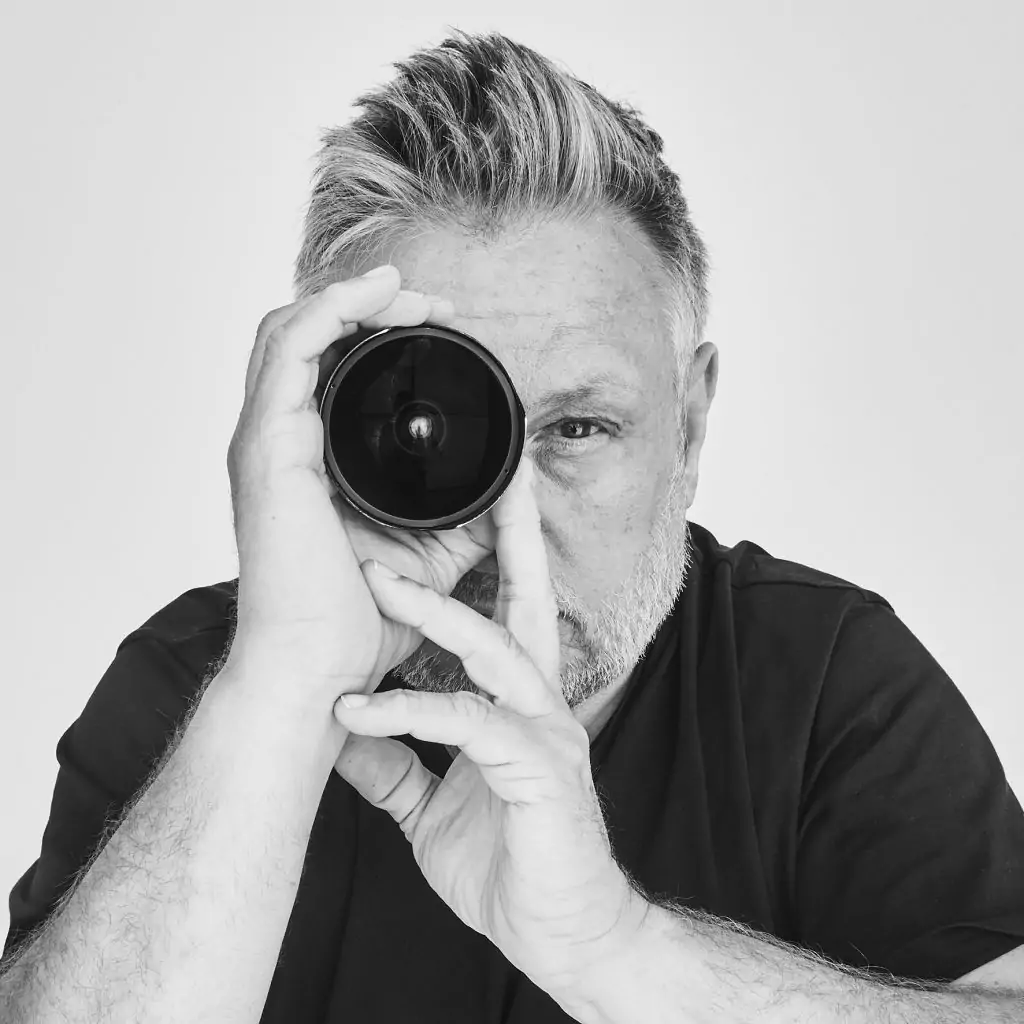
©Rankin
I’m happiest when I’m using photography to help me understand myself and the world around me
RANKIN
Fearless compositions and relentless experimentation characterise Rankin’s distinctive aesthetic as he blends high fashion with raw, unfiltered realism. Guided by his philosophy of connecting, he crafts photographs that stir the soul and spark contemplation. His photographic eye spans various categories, including documentary, commercial, and editorial work. This creative versatility and vision have empowered him to remain relevant in an ever-evolving industry.
In 1991, a fusion of passions set Rankin on a monumental journey that would become a significant piece of the British visual culture puzzle. Co-founding Dazed & Confused (now known as Dazed) alongside Jefferson Hack, they aimed to share a multitude of ideas and critiques of society. The magazine quickly became a pioneering force, offering incisive cultural commentary on fashion, art, photography, music, youth culture, and social issues, encouraging readers to think deeply about contemporary issues and their impact on society.
Dazed & Confused became the flagship for cutting-edge content, showcasing emerging talent and amplifying the voices of underrepresented groups, including LGBTQ+ communities and people of colour. The magazine’s commitment to relevant social issues made it a significant cultural force, influencing and reflecting contemporary youth culture and solidifying its status as a symbol of diverse creative expression.
Born in 1966 as John Rankin Waddell in Glasgow, he experienced several relocations during his early life. His family moved to Yorkshire in 1976, where he attended Thirsk School, and later to St Albans, where he continued his education at Beaumont School. At 21, Rankin worked as a hospital porter while studying accounting at Brighton Polytechnic. However, he soon discovered his passion for photography, prompting him to abandon accounting. He enrolled in a BTech course at Barnfield College in Luton and later a BA course at the London College of Printing. Though he did not graduate from either institution, these experiences laid the groundwork for his contributions to contemporary art, photography, and culture.
Rankin’s prominence rose in the 1990s during the “Cool Britannia” era, a period referencing the British patriotic song “Rule, Britannia!” He captured a revitalised British cultural scene marked by irony and nostalgia, featuring Britpop music, British art, fashion, a booming economy, and political shifts like Tony Blair’s New Labour.
The Britpop movement featured bands like Oasis, Blur, Pulp, and the Spice Girls dominating the charts. The rivalry between Oasis and Blur epitomised the era’s competitive spirit. British fashion blended 1960s mod, 1970s punk, and 1980s new wave, with designers like Alexander McQueen and models like Kate Moss defining the look.
The Young British Artists (YBAs), including Damien Hirst, Tracey Emin, Sarah Lucas pushed the limits of British contemporary art with daring and controversial works. Hirst’s formaldehyde-preserved animals and Emin’s unmade bed became iconic, sparking debates about art and morality. The YBAs were closely tied to the era’s commercial success, with advertising magnates like Charles Saatchi championing their work. This intersection of art and commerce reflected a society where cultural production and consumerism were intertwined.
British cinema also experienced a renaissance, with films like Trainspotting, Lock, Stock and Two Smoking Barrels, and The Full Monty gaining international acclaim. These films were noted for their gritty realism, dark humour, and distinctive British identity, highlighting social and economic issues.
Amidst all this Cool Renaissance, Rankin captured the culture and ensured it was seen and heard. His retrospective exhibition, “Back In the Dazed: Rankin 1991-2001,” which opens on the 28th of May and runs until the 23rd of June 2024 at 180 Studios, revisits the iconic era of Cool Britannia and 90s style, offering a comprehensive look at his groundbreaking work with the magazine.
Rankin’s captivating imagery has appeared in over 40 monograph publications and has been exhibited internationally at institutions like V&A, London, MoMA, New York, and The National Portrait Gallery, London. Rankin’s impact on contemporary photography, fashion, music, and culture is undeniable. His work in publishing with cultural commentary media sites and magazines such as AnOther Magazine, AnOther Man, and Hunger embodies his relentless pursuit of spreading creativity, culture, visual arts, diversity, and inclusivity. Rankin’s forays into music video direction speak for themselves.
Versatility, keen cultural insight, and a fearless approach to image-making have defined a career and has influenced a generation of creatives, making Rankin a pioneering force in visual culture. As we caught up with the iconic photographer ahead of his retrospective, he reflected on his journey and the enduring impact of his work.
‘Back In the Dazed: Rankin 1991-2001”, is on display May 28th – June 23rd at 180 Studios, London. Tickets available from 180studios.com/rankin
Hi Rankin, How are you doing? Thank you for taking the time to speak with us. Please introduce yourself to those who may not know you or who might not be familiar with your work.
RANKIN: Hi, I’m Rankin. I’m perhaps best known as a portrait photographer, photographing famous people including the late Queen Elizabeth II, The Rolling Stones, and Kendall Jenner to Madonna and David Bowie.
Back in 1990 I also co-founded Dazed & Confused, acting as the first creative director of the magazine and also as the main photographic contributor for most of the first decade. Since then my work has spanned three decades and includes portraits, beauty photography, and editorial work. I’m happiest when I’m using photography to help me understand myself and the world around me.
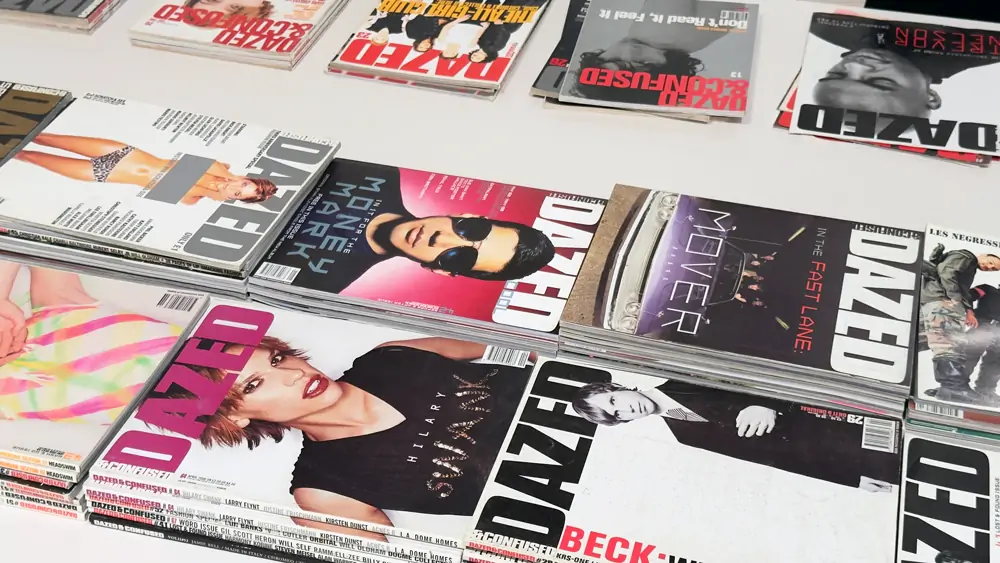
Could you share with us the early moments of your journey into photography, what motivated you to embrace a career in this field, and how these experiences led you to become the co-founder and first photographic editor of the celebrated publication Dazed & Confused?
RANKIN: My journey into photography began at college, I was initially studying accountancy but realised that was never going to fulfil my curiosity and how inquisitive I was. So I started again and reapplied to do photography as art. I was definitely drawn to the power of imagery and its ability to communicate beyond words and languages.
When I got to photography college, at the London College of Printing (now London College of Communication), on the first day, I met the editor of the student magazine, titled Succession, and from there on I worked on student magazines in parallel to my photography courses. These joint passions led me to pursue photography more seriously and working on magazines eventually led to the creation of Dazed & Confused with Jefferson Hack.
Not a lot of people know that the original intention for Dazed was to be a platform, which would include an art gallery, a record label and a whole host of other things. So if you look at the old issues of the magazine, try to think of them as a Trojan horse, using the medium of a magazine to get across a multitude of different ideas.
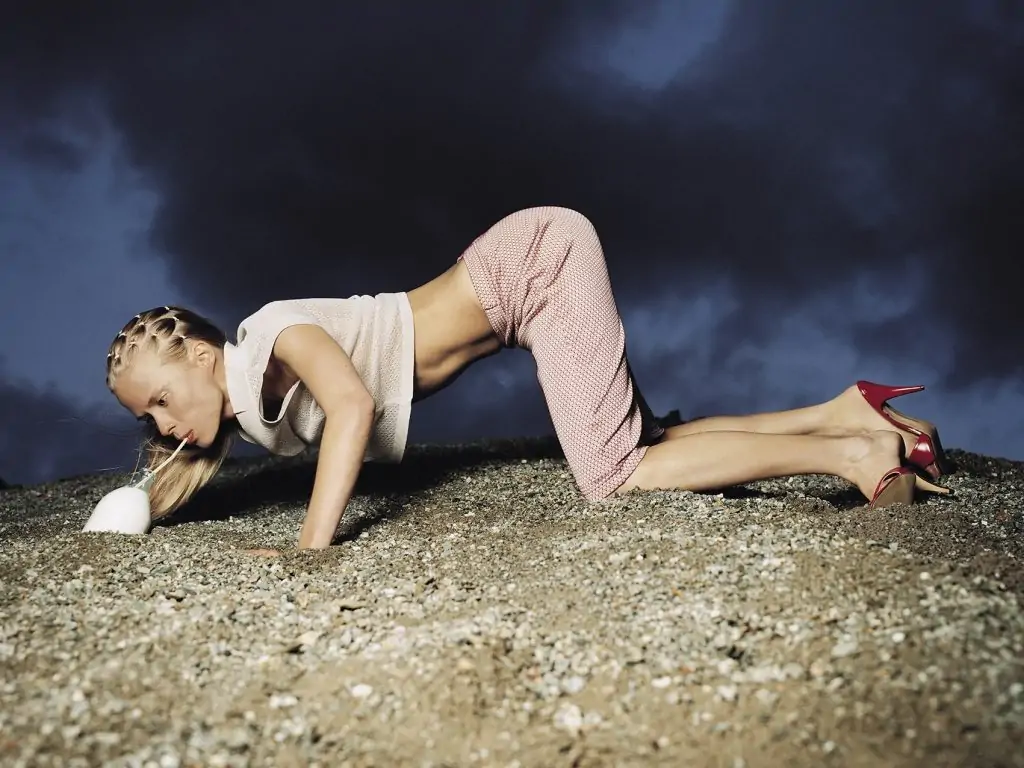
Your work often touches on themes of celebrity, fashion, and identity. Within this context, could you discuss one or two pivotal projects that really embody these themes for you?
RANKIN: From Dazed, I would say that the series “Blow Up”, was really the first pivotal piece of work I did and really stays with me. The idea was to create a portrait of nightlife at that time, by taking pictures of clubbers at nights all over London. In a lot of ways this was the first iteration of my RankinLIVE project, where I take pictures of the public, not models or celebrities.
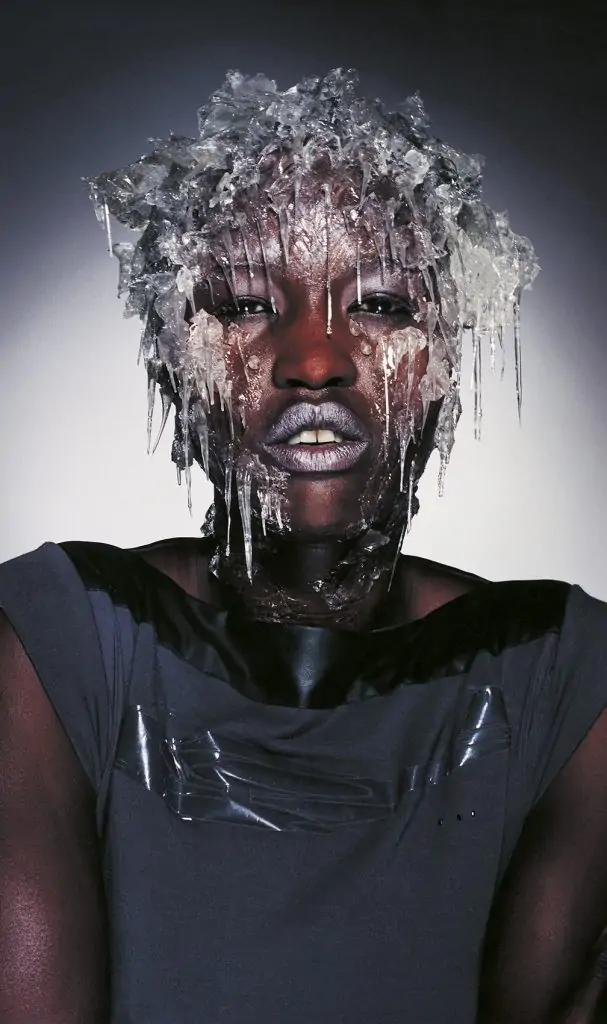
Issue 45, 1998 (c) Rankin
What role do you believe photography plays in shaping or challenging cultural and societal norms, and how do you handle the responsibility that comes with creating images that can influence public perception?
RANKIN: Photography is a powerful medium that shapes societal views and challenges cultural norms. As a photographer, I feel a deep responsibility to consider the impact of my images. My approach has always been to provoke thought and push boundaries respectfully. Plus I’ve always used photography to turn a critical eye on culture and critique society. For me, the nature of media, and the medium of image creation and dissemination, is a discussion we can’t afford not to be having.
Building on that, how has your background and personal history influenced the thematic focus and aesthetic style of your photography? Can you discuss the evolution of your artistic voice over the decades?
RANKIN: Growing up in a working-class environment in Scotland, I always considered myself a bit of an outsider looking in. Also my parents encouraged me to ask questions, which eventually turned me a bit of a contrarian.
This perspective has profoundly influenced my work, driving me to explore themes of identity, belonging and to some extent trying to have fun with the very medium of photography and what it presents and represents. Over the decades, my style (and ability) has evolved but most of my important artwork has an idea or a concept as its basis, and my portrait work attempts to reveal the character of my subjects. Both approaches are based on that inquisitive and questioning, contrarian nature.
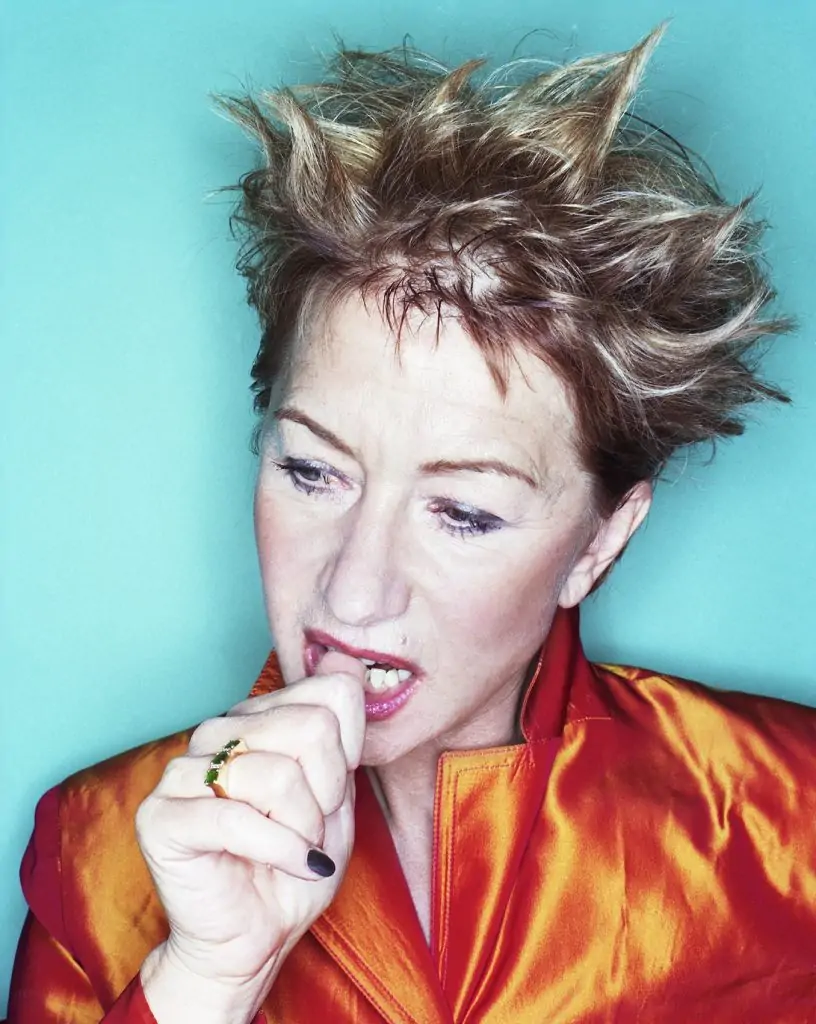
Issue 46, 1998 (c)Rankin
What philosophical principles guide your approach to photography, particularly in how you engage with and represent your subjects? In addition, how do you balance the intrinsic voyeurism of the camera with respect for your subjects?
RANKIN: I believe in authenticity and vulnerability in photography. My principle is to see the person, not just the subject. Plus, when I photograph people, I try to make a photo, not just take it. And I do that through collaboration. What I mean by collaborating, is making the picture together, with my team and most importantly the subject I’m photographing.
Every subject is very different, in fact a lot of people hate having their photo taken and are visibly uncomfortable when they first come to set. So a big part of my job is to make them feel at ease. That’s why I allow the subject to select the final shot, so we are both happy with their image. Balancing the voyeuristic nature of the camera with that respect means creating a space where the subjects feel part of the process, allowing themselves to be seen and their personalities to be reflected in the final images.

Continuing on, can we discuss your collaborative process, particularly in editorial or fashion photography? Could you provide an example of a notable collaboration and explain how you balance your artistic vision with the inputs of designers, stylists, and other creative professionals?
RANKIN: I also love to collaborate in fashion, beauty and art. Probably my favourite collabs are my series of beauty books. The most collaborative being the one I did with Marco Antonio, who is Fashion & Beauty Director for my current magazine HUNGER.
For me, beauty photography is like using a face like a canvas. It’s the perfect combination of portraiture and fashion. It really plays to my strength of lighting but also being able to elicit an emotional performance from my subject whilst working with the artistry of the makeup artist and glam & styling team. With Marco those ideas can come from either of us and really can be surprising and sometimes provocative or challenging.
This May, you will open your first retrospective exhibition, ‘Back in the Dazed: RANKIN 1991-2001,’ at 180 Studios. Can you tell us more about the essence of the exhibition and what we can expect to see? Why was this particular decade chosen to be showcased?
RANKIN: The upcoming exhibition, ‘Back in the Dazed: RANKIN 1991-2001,’ at 180 Studios, focuses on that formative first decade of my career. This period was when I defined my approach and early style and when Dazed & Confused first made its mark. It is quite unusual for one photographer to be the main photographic contributor to a magazine for that long, plus that period, the 90’s, is one that a lot of people are fascinated by.

Visitors will get to see some of my favourite images from that time and immerse themselves in the magazine contents through my eyes. I work with a curatorial team who have done my exhibition and book projects for years. They know my work inside and out, and it’s always interesting to see how other people respond to what I was doing and how my work impacts them. It was such a pleasure to go back and reminisce about that period that defined a generation.

What current trends or technologies in photography excite you the most, and how might they influence the direction of your future projects? Are there new genres or techniques you are particularly interested in exploring?
RANKIN: I’m excited by the potential of digital, augmented reality and artificial intelligence in photography. These technologies open up new realms for creativity and interactivity in all our work. I’m particularly interested in exploring immersive photographic experiences and different approaches to making and viewing work.
Contrary to some other photographers I see these new techniques and technologies as just tools. Resources to help me tell my story better to different audiences.
Recently I’ve also been trying to use photogrammetry, or creating photographic based sculptures, which I have to say I’d love to do lots more of. I love the idea of taking the digital and from that creating a bronze that will literally last for thousands of years. There’s something oxymoronic and subversive about it. I’ve always wanted to push boundaries with my work and that includes exploring new mediums and what photography really can be.
Looking at the broader scope of your career, what do you hope your legacy in the world of photography will be? How do you want your work to be remembered and studied in the context of photographic history?
RANKIN: As a photographer, time’s always on your shoulder, it is inherent to the element of the medium where you are capturing a fraction of a second. Which of course is then representative of a slice of time that as the photographer, you hope will then last forever. So consequently, I am kind of always thinking about time and my image being a kind of portal through history and space.
But contrary to that, I’m not really personally thinking about legacy. For someone like me, the next shot is the real buzz. Even as thousands of my previous images grace magazine covers, fill books, and become embedded in the cultural consciousness. As a creator, my momentum is forward thinking and looking, my mind is always scanning for new ideas. So legacy isn’t something I dwell on too much; I’m more focused on the now, and on what comes next.

Wrapping up, could you share your philosophy of photography? How has it evolved throughout your career, and how do you describe its core importance in your life and career?
RANKIN: Throughout my career, my philosophy has always been to try to connect with an audience – to make photographs that make you feel and think something at the same time.
Back In the Dazed: Rankin 1991-2001, opens on the 28th of May and runs until the 23rd of June 2024 at 180 Studios
Tickets available from 180studios.com/rankin
©2024 RANKIN, Waddell Limited


